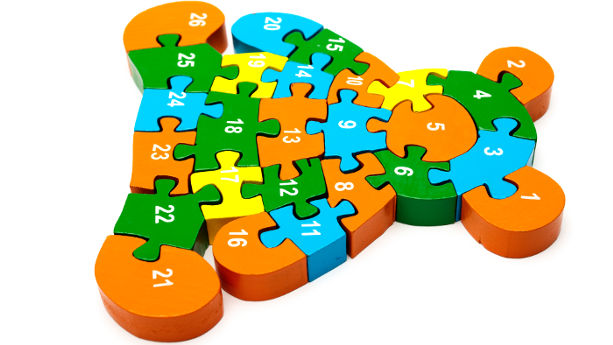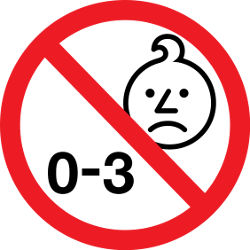
Planning to import or manufacture toys and other children’s products in the European Union? In this guide, we cover what you must know about small parts bans, and how small parts for certain age groups, and how ‘small parts’ are defined.
Content Overview

FREE CONSULTATION CALL (US, EU & UK)
- Request a free 30-minute call with Ivan Malloci to learn how we can help you with:
- Find product requirements
- Certification and labeling
- Lab testing
What is the definition of “small parts” in the EU?
The definition of small parts includes toys and other relevant children products, their removable parts, or parts that can be broken into small pieces, are also considered as small parts.
According to the EN 71-1: Mechanical and physical properties– which is a mandatory safety standard harmonized under the Toy Safety Directive – there are several definitions of small parts. Here are a few examples:
a. Objects that fit into the small part cylinder as defined in section 8.2
b. Balls or products that contain small balls
Are toys and children’s products with small parts banned in the EU?
As explained in this guidance document published by the European Commission, the Toy Safety Directive prohibits small part for at least three categories of products:
a. Toys containing small parts and intended to be used by children under 36 months
b. Toys containing small parts and are intended to be put into the month of the children
c. Some magnetic toys, which are deemed more dangerous than ‘regular’ toys
Also, the small parts ban might also apply to some specific children’s products that don’t have play features but might present a risk of choking, as for example baby feeding bottles
Toys containing small parts and intended to be used by children under 36 months
Toys, which are clearly intended for use by children under 36 months, and their component parts and any of their detachable parts must be of such dimensions as to prevent them are being swallowed or inhaled.
Examples of relevant products include:
- Teether keys
- Teething mittens
- Bathtub toys
Toys containing small parts and are intended to be put into the month of the children
The guidance document also points out that it is important for manufacturers and importers, distributors to note that the prohibition of toys containing small parts is not only limited to toys intended for children under the age of 36 months.
If the toy is intended to be put in the mouth of the children, regardless of the age category it is intended to, it shall not contain small parts that might cause choking hazards to children.
Examples of relevant products include:
- Whistle toys
- Musical toys
- Biting toys
Other banned children products
General (Non-toys) children’s products might also bear potential choking and ingestion hazards. The General Product Safety Directive (GPSD) requires all consumer products to be safe. Thus, if you deem your children’s products to have choking hazards, we recommend you to perform a risk assessment and if a small part warning is necessary.
We recommend that you start searching for relevant safety standards. For example, the following safety standards all refer to the test method that uses the cylinder defined in the standard EN 71-1:
a. EN 14350 – Child Care Articles. Drinking Equipment
b. EN 716 – Furniture. Children’s cots and folding cots for domestic use
c. EN 1888 – Child care articles. Wheeled child conveyances
d. EN 12227 – Playpens for domestic use. Safety requirements and test methods
This means that a product, or one of its components, is deemed to be a “small part” if it fits the small parts cylinder as defined in the standard.
Keep in mind that importers and manufacturers are ultimately responsible. If your product poses a small parts safety risk (or any safety risk for that matter) it doesn’t matter if it falls within the standard definition explained above.
Which products require small parts warning in the EU?
While for toys intended to be put in the mouth or toys designed for children of 0-36 months small parts are banned, there are toys that are intended for older children but might still be dangerous for children under 36 months.
For example, because the parents might give such toys to children younger than 36 months, not being aware of the choking danger. For this reason, toys for other age groups shall be accompanied by a warning label.
Here we provide some of examples of toys that might require warning labels:
- Expanding materials
- Aquatic toys and inflatable toys
- Magnets
- Toys contained in food – for instance inside a cereals package
- Soft-filled toys and soft-filled parts of a toy
Magnetic/electrical experimental sets intended for children over 8 years might also require a small parts warning.
How do I know which age group my product belongs to?
The Toy Safety Directive doesn’t specify any methods or instructions for manufacturers, and importers to evaluate appropriate age group classification for toys. However, you can still use the CEN ISO/TR 8124, Part 8: Age determination guidelines to determine what age group your toys belong to.
The CEN ISO/TR 8124 provides a full list of toy examples that are suitable to be used by children of different age groups. This result is determined by the development of the physical and mental abilities of children in different age groups.
Below we list some examples of toys appropriate for certain age groups.
Children of 4-8 months
- Tethers
- Teething rings
- Activity playboards
- Bath toys
- Balls or cylinders
- Nesting toys
- Stacking toys
- Roly-poly toys
- Bop-punching toys
- Pop-up action toys
Children of 12-18 months
- Boxes
- Tubs
- Buckets
- Rocker chairs
- Sliding beads
- Pounding benches
- Plastic lightweight balls
- Musical toys
- Simple building blocks
- Toys for sand and water
Small part warning text examples
In this section, we provide some examples of warning statements required for toys containing small parts.
Age Warning and Hazard Indication Warning
As already said, toys that are intended for children older than 36 months but might still be mistaken as toys suitable for younger children. For this reason, a warning label might be required. Here an example of the text:

“Warning. Not suitable for children under 36 months.”
Note the text “Warning. Not suitable for children under 36 months/three years” text can also be substituted by the warning symbol specified on Annex V Part B of the Toy Safety Directive.
Toys Attached to Food
EN 71-1 requires that toys contained in food or co-mingled with food, such as cereal boxes, shall bear the following warning on the outer food packaging:
“Toy inside. Adult supervision recommended”
Even though this warning doesn’t directly mention “small parts”, we still think it’s relevant as it mainly aims at ensuring that the children don’t ingest small toys that might be “hidden” into food.
Does Amazon require small parts warning on products?
Currently, Amazon has not developed its own requirements for small parts contained in toys or other children ‘s products. However, it requires sellers to comply with the Toy Safety Directive, which specifies small parts warning statement requirements.
Also, Amazon reminds sellers that these requirements do not necessarily only apply to products listed under Amazon’s “Toys” category.
In some cases, toys that are required to bear a small part warning might be listed under different categories, such as some foodstuff containing toys or specific child care products that have “play features”. Here we list some examples:
- Toys in cereals
- Toys in chips
- Toys in chocolate
- Bathing crayons for children
- Bathtubs
If you want to learn more about this topic, Amazon published a dedicated page for toys mandatory safety warnings on the Amazon Seller Central.
Should the warning text be printed on the product or the packaging?
According to Article 11 of the Toy Safety Directive, warning labels shall be clearly visible and legible. They shall be affixed on the product, or on the packaging and, when relevant, in the instruction manual that accompanies the toy.
Note that if the toy is sold without packaging, the warning label must be affixed on the product.
Is there any specific test method for assessing small parts hazards?
The test methods against small parts mainly concern the fact that the product shall not fit the cylinder or the template for the small ball with the dimension that we stated at the beginning of this guide.
Also, there are additional test methods that are designed to make sure that the children can’t easily detach parts from the products, or that the products break into small parts when dropped. Here are some examples of relevant test methods:
- Drop test
- Tension test
- Torque test
We suggest you contact a reputable lab testing company to assess what kind of test might apply to your product, such us:
- QIMA
- SGS
- TÜV SÜD
How do I make sure that my supplier applies the correct warning?
You should never assume that manufacturers outside the European Union are aware of small parts warnings and age group classifications in the European Union. As such, importers must always provide ready-made labeling files directly to the manufacturer before entering production. Warning labels are often part of the product packaging artwork files.



















